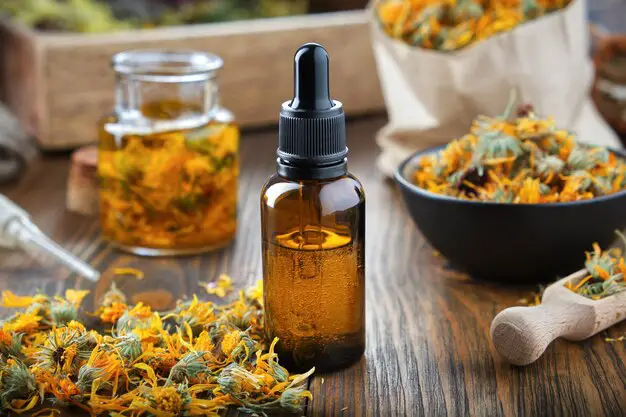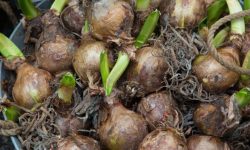What is calendula good for? More than just a pretty flower, calendula has been treasured for centuries in herbal medicine and skincare. This vibrant herb, known for its sunny yellow-orange petals, is packed with healing properties that make it a powerful ally in natural wellness.
From soothing irritated skin to supporting digestion and immune health, calendula offers versatile benefits backed by both traditional use and modern research. Whether you’re growing it in your garden or using it in homemade remedies, understanding what calendula is good for can unlock its full potential in your daily routine.
Understanding the Medicinal Components of Calendula

Calendula’s healing power lies in its rich concentration of active compounds that work together to support health and recovery. Chief among these are flavonoids—natural antioxidants that protect cells from oxidative stress and reduce inflammation. These compounds help explain calendula’s ability to soothe skin, calm irritation, and promote tissue repair.
Another key component is triterpenoids, which are known for their anti-inflammatory and antimicrobial effects. They support calendula’s traditional use in treating wounds, infections, and swelling. Additionally, calendula contains carotenoids, the pigments responsible for its bright color. These compounds are converted by the body into vitamin A, essential for skin health and immune function.
Calendula also contains saponins and polysaccharides, both of which contribute to its immune-boosting and hydrating properties. These make calendula particularly effective in teas, tinctures, and salves intended to fight infections and speed up healing from the inside out. When used regularly, calendula’s compounds offer natural support for both external skin concerns and internal wellness.
Calendula for Skin Health and Healing
Calendula is most widely celebrated for its skin-soothing and restorative powers. Traditionally used in herbal medicine to treat wounds, rashes, and irritations, calendula has earned a strong reputation as a gentle yet highly effective topical remedy. Its anti-inflammatory, antibacterial, and antifungal properties make it ideal for treating minor cuts, scrapes, insect bites, sunburn, and eczema.
When applied to the skin in the form of creams, salves, or infused oils, calendula encourages tissue regeneration by stimulating collagen production and increasing blood flow to the affected area. This not only speeds up healing but also helps reduce the risk of scarring. Because of its mild nature, calendula is safe enough for sensitive skin, including that of babies, and is often found in natural diaper creams and soothing balms.
Research also suggests that calendula may protect the skin barrier by reducing oxidative stress and preventing infection in damaged tissue. Whether you’re dealing with acne-prone skin, irritation from shaving, or post-procedure sensitivity, calendula offers a gentle solution that supports long-term skin resilience. Regular use can improve overall skin tone and texture, keeping the skin hydrated, calm, and naturally glowing.
Calendula in Treating Eczema and Dermatitis
Calendula has become a popular natural remedy for managing eczema and dermatitis due to its ability to calm inflammation, reduce itching, and support skin healing without harsh side effects. These chronic skin conditions often involve redness, flaking, swelling, and intense discomfort. Calendula, rich in flavonoids and triterpenoids, works by soothing the irritated skin barrier and reducing the overactive immune response that leads to flare-ups.
Its gentle anti-inflammatory action helps ease the persistent itching that can lead to scratching and infection, especially in children or individuals with sensitive skin. Calendula-infused creams, ointments, and balms can be applied directly to affected areas, offering immediate relief while promoting skin regeneration over time. Its antimicrobial properties also help protect broken skin from secondary infections, a common issue for those with eczema and contact dermatitis.
Studies have shown that calendula can be as effective as low-dose corticosteroids in mild to moderate cases, without the risk of thinning the skin or long-term dependency. With consistent application, calendula supports the repair of the skin’s natural barrier, improving hydration and resilience while minimizing flare-up frequency. For many sufferers, calendula offers a plant-based path to clearer, calmer, and more comfortable skin.
Calendula as a Natural Antiseptic and Antifungal Agent
Calendula’s natural antiseptic and antifungal properties make it a valuable herbal ally for preventing and treating minor infections. Its effectiveness stems from powerful compounds like flavonoids, saponins, and essential oils, which work together to combat harmful bacteria and fungi without disrupting the skin’s natural microbiome. This makes calendula especially useful in first-aid applications, such as cleaning minor wounds, cuts, scrapes, or insect bites where the risk of infection is present.
When used as a wash, salve, or infused oil, calendula helps cleanse wounds gently while promoting tissue repair. Its antiseptic qualities help reduce the chance of bacterial contamination and speed up healing, making it a natural alternative to synthetic ointments. Calendula has also been found effective against fungal infections like athlete’s foot, ringworm, and even mild cases of candida-related skin issues. Its soothing nature allows it to treat sensitive or inflamed skin without irritation, which is especially important for those prone to allergies or chemical sensitivities.
Moreover, calendula’s ability to reduce microbial activity on the skin makes it suitable for use in natural deodorants, foot soaks, and postpartum care. It not only addresses existing issues but also acts preventively by strengthening the skin’s defenses. Whether used alone or in combination with other herbs, calendula stands out as a gentle yet powerful option for keeping skin clean, healthy, and protected naturally.
Using Calendula to Promote Oral Health
Calendula has long been valued for its gentle yet powerful effects on oral health. Its anti-inflammatory and antimicrobial compounds make it an ideal natural remedy for soothing gum irritation, reducing plaque-forming bacteria, and supporting overall mouth hygiene. Many herbalists and dentists alike recommend calendula-infused mouthwashes as a non-toxic alternative to harsh chemical rinses.
When used regularly, calendula can help manage common issues such as gingivitis, bleeding gums, and mouth ulcers. Its healing properties accelerate tissue repair, making it especially beneficial after dental procedures like tooth extractions or deep cleanings. Calendula’s natural astringent qualities can also help tighten gum tissue and reduce inflammation without causing dryness or discomfort.
Because it is alcohol-free and plant-based, calendula is a gentle choice for those with sensitive gums, children, or individuals recovering from oral surgery. Whether applied as a rinse, gel, or infusion, calendula offers a safe, effective way to keep your mouth clean, balanced, and healthy.
Digestive Benefits of Calendula Tea
Calendula tea offers gentle yet effective support for the digestive system, making it a favorite among herbalists for calming a range of gastrointestinal issues. Its natural anti-inflammatory and antispasmodic properties help soothe irritation along the digestive tract, easing symptoms such as indigestion, bloating, cramping, and even acid reflux. For those with sensitive stomachs or chronic conditions like gastritis, sipping warm calendula tea can bring noticeable relief.
In addition to calming discomfort, calendula tea supports the healing of the stomach lining and intestines. It promotes better bile production, which aids in the breakdown of fats and enhances nutrient absorption. This makes calendula a valuable companion for people recovering from illness, undergoing a cleanse, or simply trying to improve gut function naturally.
Calendula also contains mild antimicrobial compounds that help maintain a healthy balance of gut flora, reducing the growth of harmful bacteria without disrupting beneficial ones. For those dealing with leaky gut syndrome or frequent digestive upset, calendula tea can serve as a soothing tonic that encourages long-term healing and balance. When consumed regularly, it not only eases immediate symptoms but also strengthens the digestive system over time.
Calendula for Menstrual Support
Calendula has long been valued in traditional herbal medicine for its gentle yet effective support of women’s reproductive health, particularly in easing menstrual discomfort. Its natural antispasmodic properties help relax uterine muscles, which can significantly reduce the intensity of cramps and lower abdominal pain during menstruation. For women who experience irregular periods, calendula may also help regulate the menstrual cycle by promoting healthy blood flow and reducing pelvic congestion.
In addition to physical relief, calendula offers mood-balancing effects that are particularly beneficial during PMS. Its calming nature can help ease emotional symptoms such as irritability, mood swings, and anxiety, which often accompany hormonal fluctuations. Drinking calendula tea or using calendula tinctures in the days leading up to menstruation can help create a more balanced and comfortable cycle.
Calendula is also known to be a uterine tonic, meaning it strengthens and tones the uterus over time. This makes it especially useful not only for monthly support but also for women who are recovering postpartum or dealing with hormonal imbalances. When used consistently, calendula helps nurture the reproductive system while gently guiding the body toward natural equilibrium.
Calendula to Support Immune Function
Calendula is valued not only for skin healing but also for boosting the immune system. It contains strong antioxidants like flavonoids, carotenoids, and polyphenols. These compounds protect cells from oxidative stress and inflammation. Both are major causes of weak immune responses.
By reducing free radical damage, calendula strengthens the body’s defenses. It helps resist common infections and environmental stress. Calendula also encourages the activity of white blood cells, such as lymphocytes and macrophages. These cells detect and destroy harmful invaders like viruses and bacteria.
In addition, calendula supports the lymphatic system. It promotes the flow of lymph, which carries immune cells through the body. This helps remove toxins and reduces swelling in the lymph nodes. When taken as a tea, tincture, or supplement, calendula gently supports the body’s natural immunity.
Calendula for Eye Health
Calendula has long been recognized for its soothing and protective effects on the eyes, especially in herbal traditions that emphasize gentle, natural care. Its high concentration of antioxidants, particularly lutein and zeaxanthin, plays a vital role in shielding the eyes from oxidative damage caused by UV rays and digital screen exposure. These carotenoids are known to filter harmful blue light and support the health of the retina, helping to prevent age-related macular degeneration and cataracts over time.
In addition to its internal benefits, calendula can be used topically in diluted eye washes to calm irritated or inflamed eyes. Herbalists often recommend calendula-infused eyewater or compresses for relieving conjunctivitis (pink eye), minor eye infections, and general eye strain. Thanks to its anti-inflammatory and antimicrobial properties, it not only soothes discomfort but may also help reduce redness, swelling, and bacterial growth around the delicate eye area.
Calendula’s gentle nature makes it suitable for sensitive individuals and children when used properly. Whether consumed as a tea for overall antioxidant support or applied carefully in external rinses, calendula offers a natural way to support and maintain clear, healthy vision throughout life.
Calendula in Culinary Applications
Calendula is not just a medicinal herb—it’s also edible. Its bright orange or yellow petals add both color and flavor to many dishes. The petals have a slightly peppery, tangy taste, often compared to saffron. For this reason, calendula is sometimes called “poor man’s saffron.”
Fresh petals can be sprinkled over salads for a burst of color. They also work well in soups, omelets, and rice dishes. When added to broths or stews, calendula gives a golden hue and subtle earthy flavor. Some people even mix the petals into herb butters or soft cheeses for added visual appeal.
Calendula can also be dried and used as a seasoning. Dried petals are often blended with salt, herbs, or spices. They can be steeped in hot water to make herbal tea or infused into oils used in cooking.
In baking, calendula petals are used to decorate cakes and pastries. They are safe to eat and hold their color well when dried. Because of this, they’re popular in edible flower mixes for garnishing desserts.
Calendula’s culinary use goes beyond flavor. It also provides small amounts of antioxidants and plant compounds that support digestion and overall wellness. Whether fresh or dried, calendula adds a natural and healthful touch to the kitchen.
How to Grow Calendula for Maximum Potency
To grow calendula with the highest medicinal quality, choose a spot with full sun and well-drained soil. Calendula grows best in slightly acidic to neutral soil. Add compost before planting to enrich the ground and improve drainage.
Start seeds directly in the garden or in pots. Sow them in early spring after the last frost. Space the seeds a few inches apart and cover lightly with soil. Water gently but regularly until the seedlings appear. Once they grow strong, thin them to give each plant room to spread.
Water the plants consistently, but don’t overdo it. Let the top layer of soil dry between waterings. Calendula doesn’t like soggy roots. Mulch around the plants to keep the soil moist and prevent weeds.
For the strongest flowers, harvest in the morning once the dew dries. Pick blooms when they’re fully open, as this is when they contain the most resins and essential oils. Remove old blooms to encourage more flowering.
If you want to dry the flowers, spread them out in a single layer in a dark, well-ventilated space. Store dried calendula in an airtight jar away from light and heat. This helps preserve its healing properties. Replant every few weeks for continuous blooming and maximum harvest.
Preparing Calendula for Home Remedies
To prepare calendula for home use, start by harvesting fresh flowers when they are fully open. Choose bright orange or yellow blooms. Remove any damaged or wet petals. Rinse gently and pat dry if needed.
For drying, spread the flowers in a single layer on a clean screen or tray. Keep them in a dark, dry place with good airflow. Turn them every day until fully dry. When the petals feel crisp, store them in a glass jar away from heat and light.
To make calendula oil, fill a clean jar with dried petals. Cover completely with a carrier oil like olive, sweet almond, or sunflower oil. Seal the jar and let it sit in a warm place for about four to six weeks. Shake gently every few days. Once infused, strain the oil through a fine cloth and transfer it to a clean bottle.
For calendula salves, melt beeswax with the infused oil over low heat. Stir until smooth, then pour into containers. Let it cool before use.
You can also prepare calendula tea. Steep one to two teaspoons of dried petals in hot water for 10–15 minutes. Strain and sip slowly.
Each method offers different benefits. Choose what fits your needs, whether it’s for skin healing, immune support, or soothing digestion. Always label your homemade remedies with the date and ingredients.
Safety and Precautions When Using Calendula
Calendula is gentle, but you still need to use it wisely. Always test a small amount on your skin before using it more widely. Some people with sensitive skin may experience redness or itching. If irritation appears, stop using it.
Do not use calendula if you have allergies to plants in the Asteraceae family. This group includes daisies, chrysanthemums, and ragweed. If you’re unsure, consult a healthcare provider.
Pregnant women should avoid using calendula internally. It may cause uterine contractions. Breastfeeding mothers should also check with a doctor before using calendula regularly.
If you’re taking sedatives or blood pressure medication, speak with your healthcare provider. Calendula may interact with these drugs and increase their effects.
Avoid applying calendula to deep wounds or open surgical cuts without medical guidance. It’s best used for minor cuts, dry skin, or irritation.
When making teas or tinctures at home, use clean equipment and dried calendula from a trusted source. Improper preparation can lead to contamination or reduced effectiveness.
While calendula is safe for most people, use it with care, especially if you have chronic health conditions or are on medication.
Calendula in Modern Herbal Products
Calendula appears in a wide range of modern herbal products due to its skin-soothing and anti-inflammatory properties. Many natural creams and balms feature calendula to help heal minor cuts, rashes, and irritations. It’s a common ingredient in products designed for sensitive or dry skin, thanks to its gentle nature and ability to calm redness.
In facial care, calendula shows up in toners, moisturizers, and cleansers, where it supports skin repair and reduces inflammation. People with acne-prone or reactive skin often benefit from its calming effects. Calendula is also used in natural baby care lines, particularly in diaper creams and body lotions, to protect delicate skin from irritation.
Hair care brands sometimes add calendula to shampoos and conditioners to soothe the scalp and restore balance, especially for dry or flaky skin. You’ll also find calendula in wellness products like herbal teas, tinctures, and capsules that promote digestion, boost immune function, and gently support liver health.
Some natural toothpaste and mouth rinses include calendula for its mild antimicrobial action, helping maintain healthy gums and fresh breath. Its versatility makes calendula a staple in both internal and external herbal remedies, bridging traditional healing with modern wellness.
Calendula and Scientific Research
Scientific interest in calendula has grown steadily in recent years, especially in the fields of dermatology and natural medicine. Several studies confirm calendula’s anti-inflammatory and wound-healing effects. Research shows that calendula extracts can speed up tissue repair, making them useful in treating minor burns, cuts, and surgical wounds. Clinical trials have also explored its use in managing radiation-induced skin damage in cancer patients, with promising results in reducing redness and pain.
Researchers have identified active compounds such as triterpenoids, flavonoids, and carotenoids that contribute to calendula’s therapeutic value. These substances not only reduce inflammation but also show antimicrobial properties against bacteria and fungi. Some studies suggest that calendula may help inhibit the growth of certain pathogens on the skin, supporting its use in topical products.
In addition to external use, scientists have begun exploring calendula’s internal benefits. Early lab studies suggest possible immune-enhancing and antioxidant effects, though more clinical research is needed to confirm these results in humans. While traditional uses of calendula are well established, modern science continues to uncover new potential for this ancient herb.
FAQ About Benefit for Health of Calendula
What are the best ways to use calendula for skin problems?
Calendula can be used in many forms to soothe and heal the skin. Calendula cream or salve is ideal for treating dry skin, eczema, or rashes. An infused oil can be massaged into irritated areas to reduce redness and promote healing. Calendula tea, once cooled, may be used as a gentle facial rinse or compress for acne-prone or inflamed skin. Always choose products with high-quality calendula extract for the best results.
Can I take calendula internally, and is it safe?
Calendula is generally safe when taken in moderate amounts as a tea or tincture. It may help support digestion, reduce inflammation, and gently boost the immune system. However, people who are pregnant, breastfeeding, or allergic to plants in the Asteraceae family (like daisies or chamomile) should consult a healthcare professional before using calendula internally. Also, avoid using calendula internally for long periods without professional guidance.
How do I grow calendula for home use?
Calendula grows best in full sun and well-drained soil. Sow the seeds directly in the garden in early spring or late summer. Keep the soil slightly moist until the plants are established. Regular deadheading encourages more blooms, which increases the harvest of medicinal flowers. Pick flowers in the morning after the dew has dried and dry them in a shaded, well-ventilated space for future use.
How should I store dried calendula flowers for herbal remedies?
Once fully dried, store calendula flowers in an airtight glass jar, away from direct sunlight and heat. A cool, dark pantry or cabinet works best. Dried flowers usually keep their potency for about one year. Label the container with the harvest date to track freshness. Avoid storing them in plastic or moist areas, which can lead to mold and loss of medicinal value.
Are there any drug interactions or side effects associated with calendula?
Calendula is generally gentle, but it may interact with certain medications. It can enhance the sedative effects of sleep aids or anesthesia, so it should be avoided before surgery. It may also interfere with medications that affect hormone levels or immune function. Though allergic reactions are rare, they can happen, especially in those sensitive to ragweed or marigolds. Always perform a patch test before applying calendula topically and consult your doctor before combining it with medications.
Conclusion: A Herb Worth Knowing and Growing
Calendula is more than just a pretty flower—it’s a powerhouse of healing potential. Whether you’re brewing tea to soothe digestion, applying salve to a cut, or brightening a salad with golden petals, calendula offers beauty and benefit in equal measure. Its long-standing use in herbal traditions, combined with emerging scientific support, makes it a valuable addition to any natural health toolkit.
By understanding what calendula is good for and how to use it effectively, you can enjoy the many ways this versatile herb supports wellness, inside and out. Whether you’re an experienced herbalist or just beginning your journey with medicinal plants, calendula is a wise and worthy companion.






